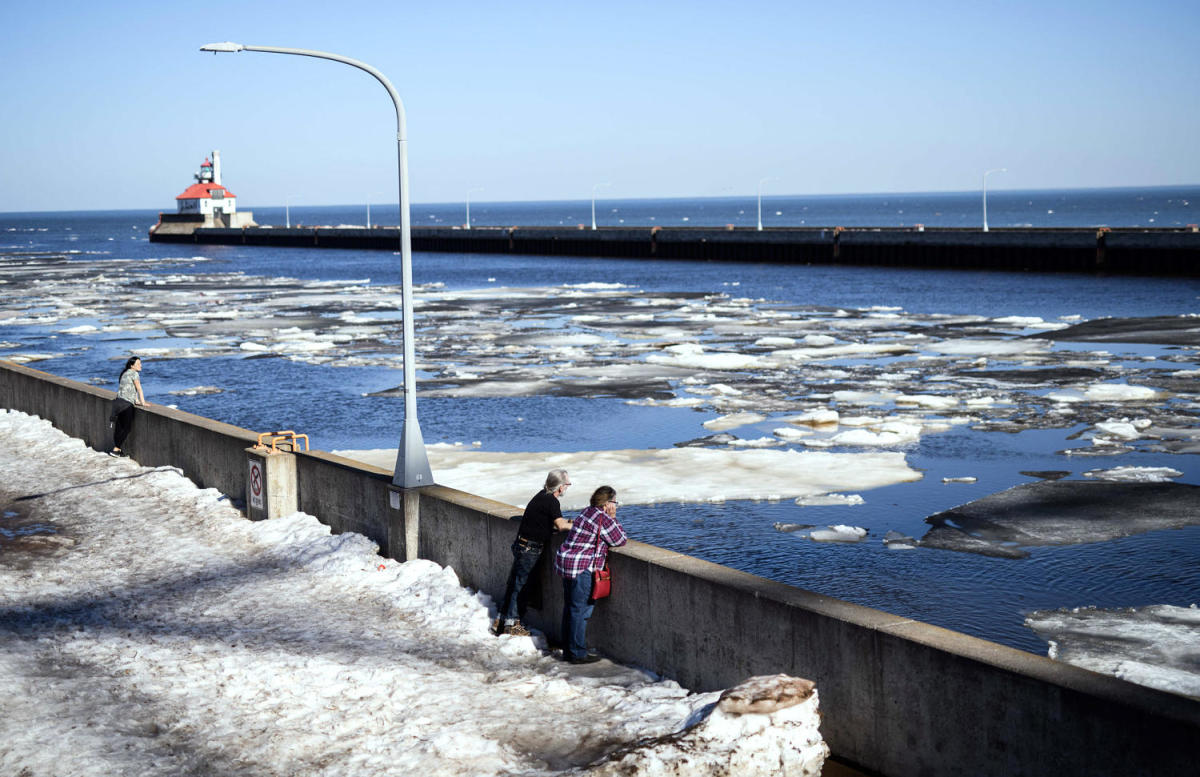The Great Lakes — known for ice fishing and frozen winter waves — rang in the New Year almost naked.
Ice covered less than 0.4% of the Great Lakes on New Year’s Day, according to the Great Lakes Environmental Research Laboratory, which uses satellite data to measure ice concentrations.
“It’s basically nothing,” said James Kessler, a physical scientist with the laboratory, which is part of the National Oceanic and Atmospheric Administration. “We have about 50 years of data. On Jan. 1, the average for today is about 9%.”
Kessler said that while the ice coverage is well below normal, it’s not unprecedented to have ice concentrations below 1% on Jan. 1, when it’s still early in the season.
The amount of ice on the Great Lakes — Lake Superior, Lake Michigan, Lake Huron, Lake Erie and Lake Ontario — determines when and how raw materials and cargo can be shipped from Midwest ports. Fish species, like whitefish, depend on ice cover to protect their eggs for reproduction. Lower ice levels could increase erosion and contribute to shifting weather patterns in the region.
Kessler said that unseasonably warm air temperatures this season have prevented ice from forming on the lakes’ surface. His research shows Great Lakes annual ice coverage is extremely variable each year, but trending lower at a rate of about 5% each decade.
“That’s certainly an indication of climate change,” he said.
Ice typically reaches its maximum extent from mid-February to early March. In an average year, ice covers about 40% of the Great Lakes at peak.
Last year, ice coverage peaked at about 23% and by mid-February, ice only covered 7% of the lakes.
Earth experienced its hottest year on record in 2023, largely because of human-caused climate change. Researchers expect El Niño, a natural climate pattern that releases ocean heat into the atmosphere, to further boost temperatures this year. El Niño winters tend to be warmer across the Great Lakes region.
Seasonal outlooks this year forecast higher-than-average temperatures in the Great Lakes region and below-average ice.
Weather forecasters expect little to change this week.
Over the next five days, “the forecast isn’t particularly favorable for ice growth either as temperatures are expected to remain mostly above normal for the entire Great Lakes region,” according to an ice outlook produced by the National Weather Service in Cleveland.
This article was originally published on NBCNews.com

Elaine Hadley is a dedicated journalist covering the ever-evolving landscape of U.S. news. With a keen interest in politics and a commitment to uncovering the truth, she provides insightful commentary and in-depth analysis on domestic issues. When not reporting, Elaine enjoys exploring the diverse cultures and landscapes of the United States.








